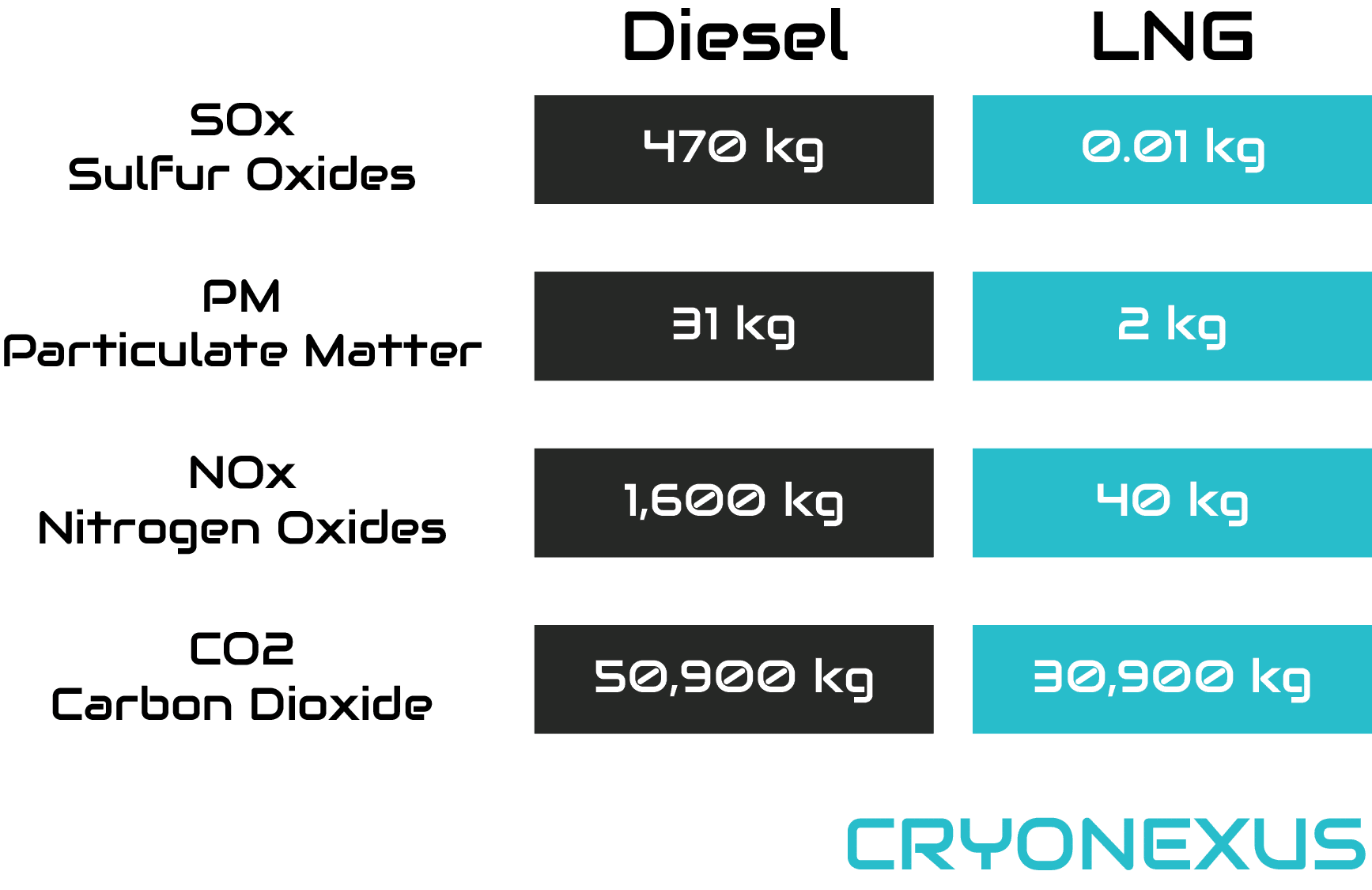Liquefied Natural Gas
Cryonexus distributes the cleanest and most economical fossil fuel that the planet and industry require for sustainable development.
Atmospheric Emissions
LNG vs. Diesel
Taking as an example a 20,000 L Diesel tank that contains 680 MMBtu in energy, the following pollutants are emitted into the environment during its combustion:
470kg SOx, 31kg PM, 1,600kg NOx, 50,900kg CO2.
According to the above, the 680 MMBtu in its equivalent for LNG would emit the following:
0.01kg SOx, 2kg PM, 40kg NOx, 30,900kg CO2

Emissions Reduction
The reduction in emissions when using LNG instead of Diesel is very significant, as shown in the attached graph where it is observed that its emissions of SOx are reduced by 100%, NOx by 97%, PM by 93%, and CO2 by 33%. Likewise, generating economic savings of up to 50% when replacing diesel with LNG and up to 30% when replacing LPG with LNG for industrial processes.

Cost Reduction
If your company is interested in reducing pollutant emissions and achieving savings on fuel expenses, please let us know about your operation and regular fuel consumption volumes so that our technical staff can prepare, without cost or obligation, a proposal of options for your transition to the most environmentally friendly fossil fuel.
By reducing pollutant emissions, we are contributing to the efforts in the fight against climate change.
What is Liquefied Natural Gas?
Liquefied Natural Gas (LNG) is a versatile and efficient form of storing and transporting natural gas. It is produced through a liquefaction process that involves cooling natural gas to a temperature of approximately -260°F, turning it into a denser liquid. This transformation significantly reduces its volume, making storage and transportation much more manageable compared to natural gas in its gaseous state. LNG is characterized by occupying about 600 times less space than its gaseous counterpart, enabling its cost effective and secure distribution over long distances. This form of energy provides an efficient solution to diversify the energy grid, with applications ranging from electricity generation to its use as fuel in maritime and land transportation. This contributes to the exploration of cleaner and more sustainable alternatives in the global energy landscape.
